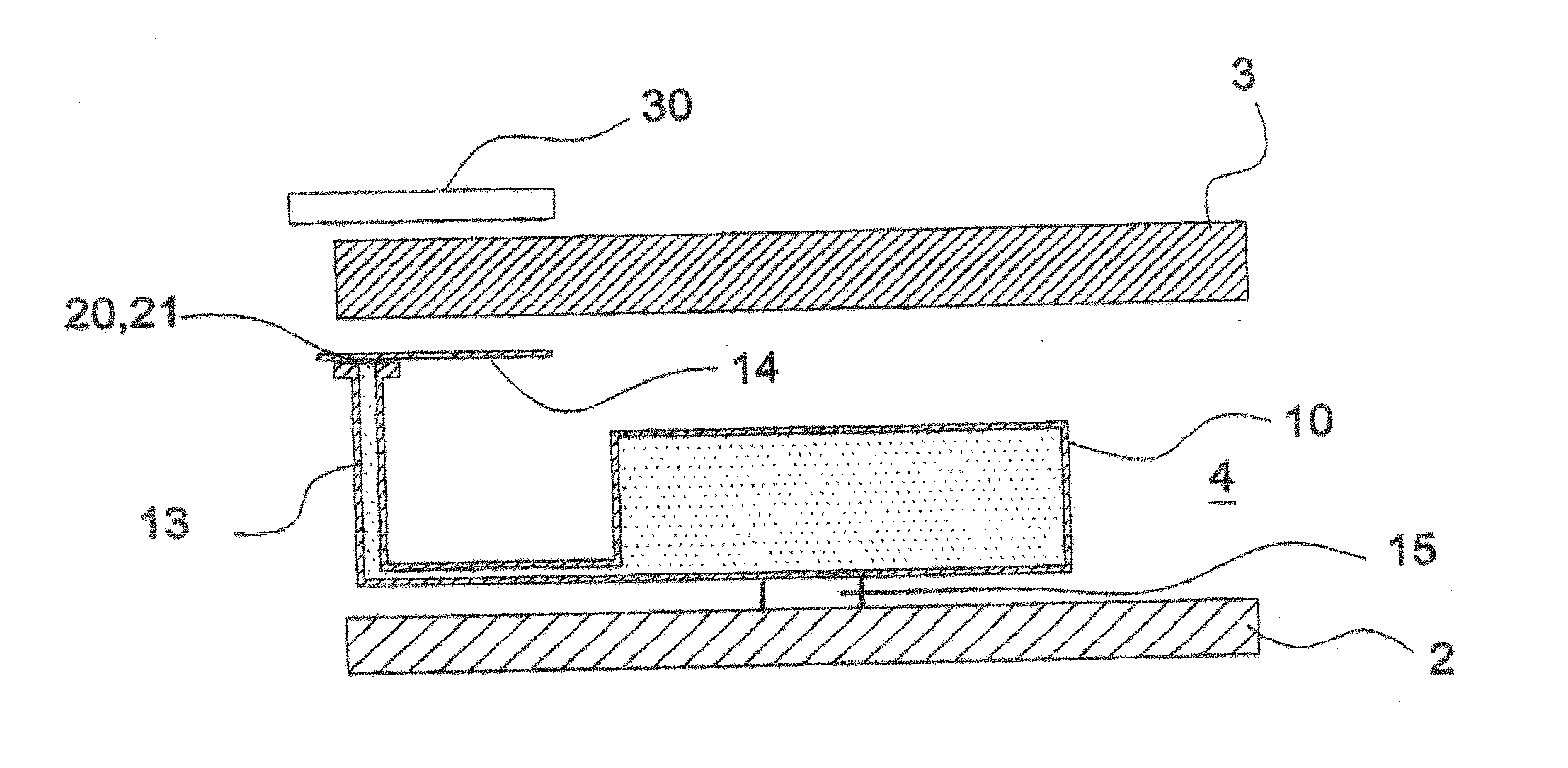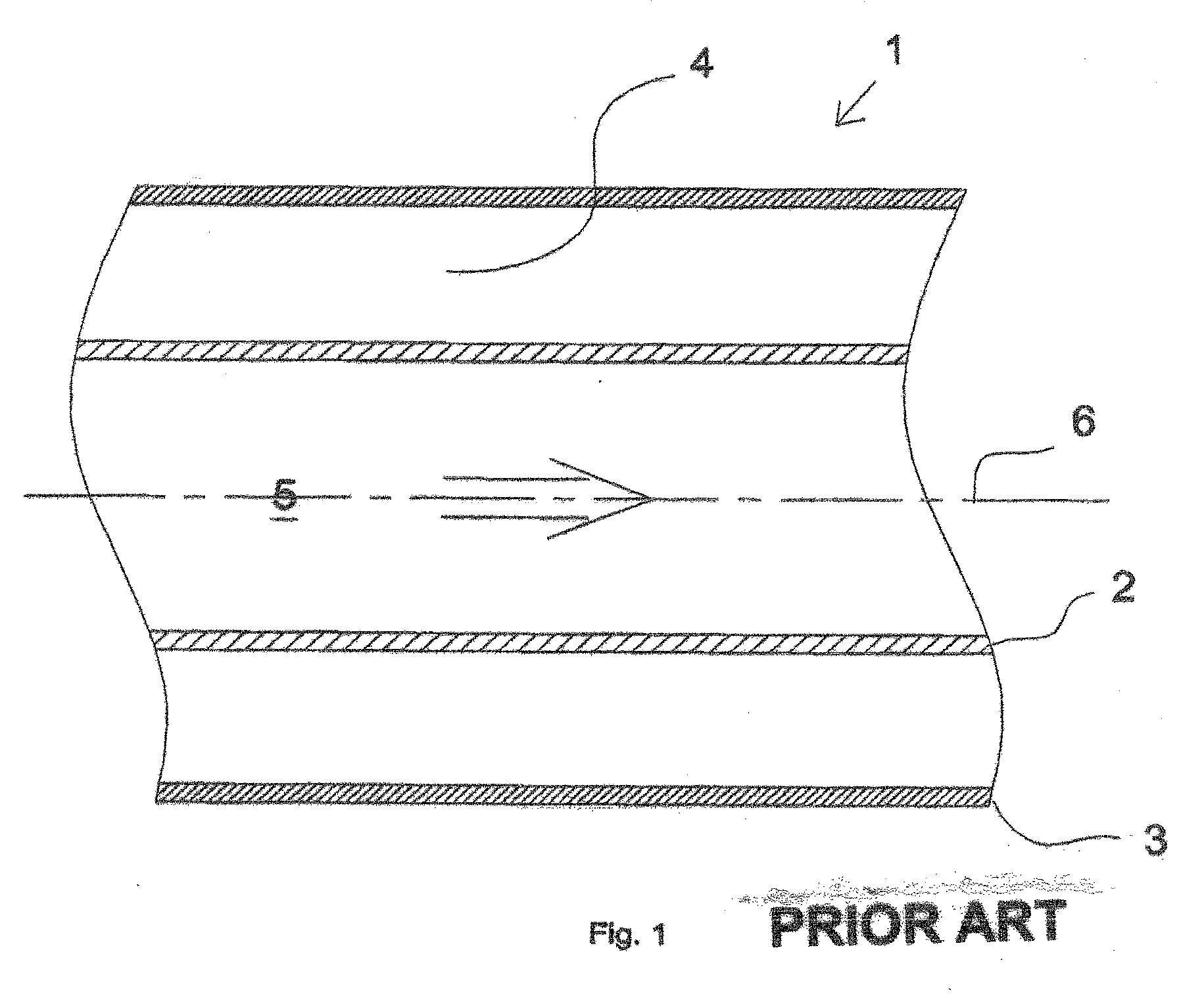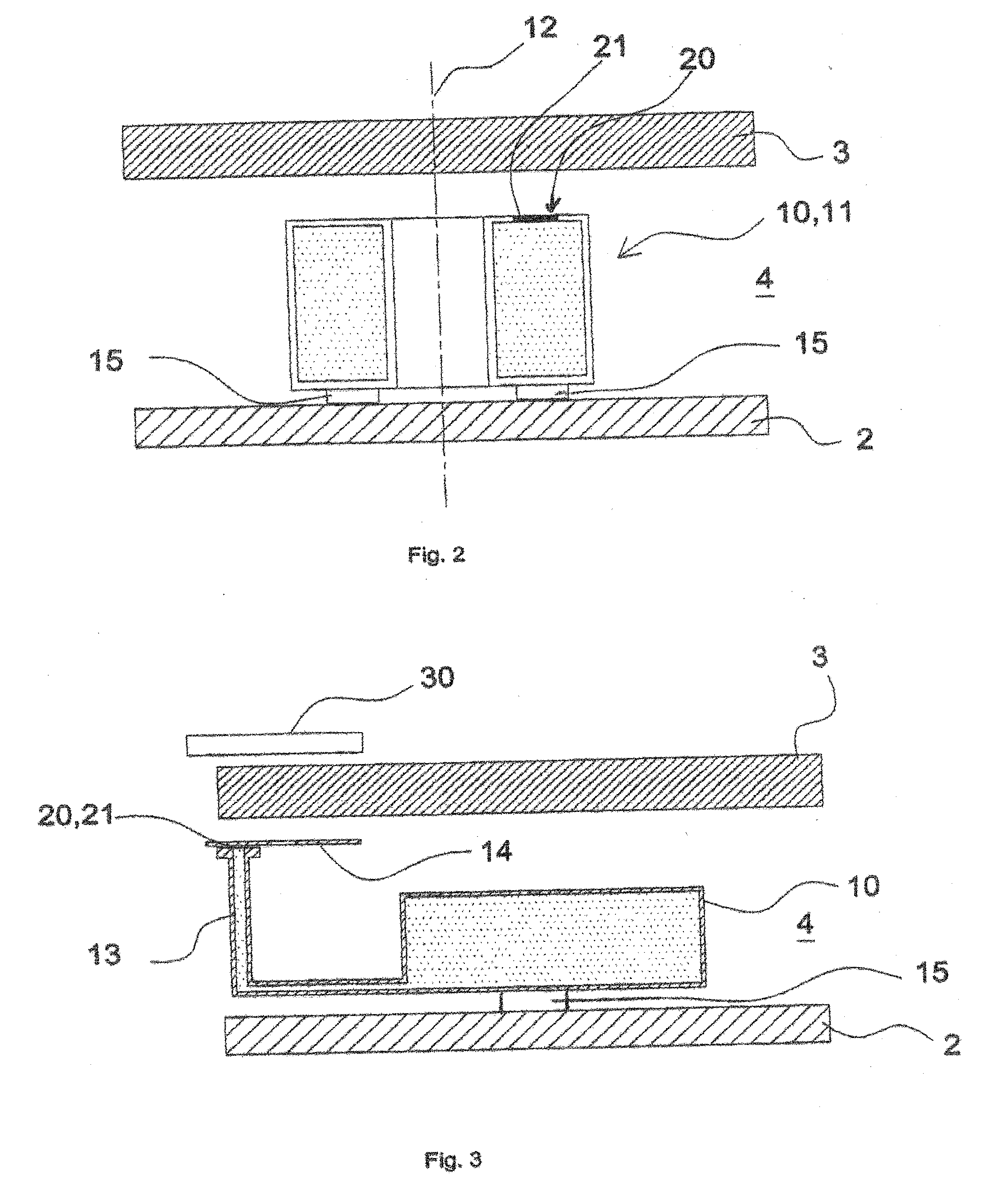Tubular radiation absorbing device for a solar power plant with improved efficiency
a solar power plant and tube technology, applied in the safety of solar heat collectors, solar heat systems, lighting and heating apparatuses, etc., can solve the problems of increased heat loss, undesirable pressure fluctuations, and reduced tubular radiation absorption devices
- Summary
- Abstract
- Description
- Claims
- Application Information
AI Technical Summary
Benefits of technology
Problems solved by technology
Method used
Image
Examples
example
[0047] A tubular radiation absorbing device 1 comprises a central tube 2 with a 70 mm diameter and a glass tubular sleeve 3 with a diameter of 125 mm. The unshown coating on the central tube has a thermal emissivity of 14% at 400° C.
[0048] The ring-shaped space 4 between the central tube 2 and the tubular sleeve 3 is evacuated and the central tube 2 is heated to 400° C. The tubular jacket reaches a temperature of about 60° C. by radiative heating with free convection on its outside. The heat losses of the central tube 2, which in this case are produced only by radiative heat transfer between the central tube 2 and the tubular jacket 2, are about 400 watts per meter of length along the absorber tube.
[0049] If the ring-shaped space 4 is filled with diffusing hydrogen at a pressure of 1 mbar, the heat losses are increased by the gas conduction by about 600 watts per meter of tube length to about 1000 W per meter. The temperature of the tubular sleeve 3 increases to about 200° C. and ...
PUM
 Login to View More
Login to View More Abstract
Description
Claims
Application Information
 Login to View More
Login to View More - R&D
- Intellectual Property
- Life Sciences
- Materials
- Tech Scout
- Unparalleled Data Quality
- Higher Quality Content
- 60% Fewer Hallucinations
Browse by: Latest US Patents, China's latest patents, Technical Efficacy Thesaurus, Application Domain, Technology Topic, Popular Technical Reports.
© 2025 PatSnap. All rights reserved.Legal|Privacy policy|Modern Slavery Act Transparency Statement|Sitemap|About US| Contact US: help@patsnap.com



